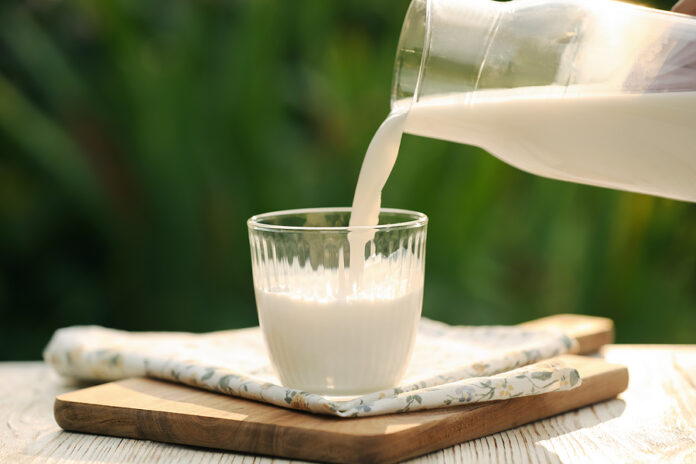
By Marianne Toftdal, (MSc, MBA) Global Business Product Line Leader, Fresh Dairy Enzymes at IFF
Lactose-free is the dairy industry’s fastest-growing segment worldwide, having experienced substantial market growth of 10% between 2016 and 2022 (Euromonitor Passport 2022). While this break-neck pace is starting to lessen, the segment is still predicted to post a CAGR of 7% until 2026, eventually reaching an annual turnover of $14 billion USD (Euromonitor Passport 2022). This potential growth indicates significant opportunities for dairy brands looking to expand their portfolio, providing they can maximize processing efficiency without impacting quality. In the past this meant the careful handling of conventional lactase enzymes – often with some amount of compromise. Today, however, new high-performance solutions are helping brands produce exciting lactose-free products to meet evolving market needs.
Read on as we explore the opportunities shaping the segment, and the potential of innovative processing methods to transform the lactose-free dairy space forever.
Regional preferences make an impact
Dairy brands operating in different territories have region-specific factors to thank for the rising popularity of lactose-free products. A theme that unites most consumers is a growing awareness of the issue of lactose intolerance and a desire to prioritize their digestive health. Even here however, there are regional splits, with 53% of consumers in China (a country with a high prevalence of lactose intolerance) stating that lactose in milk could trigger symptoms of digestive discomfort including bloating and diarrhea, compared with 28% of US customers who made the same link (Mintel, China- Nutrition watch: lactose-free dairy in APAC).
The global sugar-reduction trend is also a major growth driver for the lactose-free segment. A beneficial effect of lactase enzyme hydrolysis is that, by breaking down the lactose molecule, it releases glucose and galactose into the milk. Since these molecules are sweeter, this results in a product that contains the exact same amount of naturally occurring sugar but is perceived as sweeter than conventional milk. Given current consumer sugar-content concerns, this feature of lactose-free dairy is a major selling-point; in 2022, 11.2% of flavored and sweetened condensed milk launches had “no added sugar”and “low reduced sugar” claims (Mintel GNPD 2023), and 51% of Thai shoppers said they’re excited to try reduced sugar milk (Mintel GNPD 2020 & 2022). At the same time, Mintel cites “keep[ing] prices in check” and “reaffirm[ing] their role in providing affordable nutrition” as key priorities for dairy brands over the next two years (Mintel GNPD 2022). Clearly, the space is brimming with opportunity, but to seize this potential, manufacturers must first optimize their lactose-free formulation and processing.
Spotlight on formulation
Batch processing has been a common method of making lactose free dairy products. The time to reach lactose-free by enzymatic hydrolysis depends on the temperature and amount of enzyme added. In general, many producers dose the enzyme to reach lactose-free in 24 hours at refrigeration temperature. One disadvantage to batch processing is that a dedicated tank is needed to hold the milk. This effectively means the production line is occupied, precluding the possibility to begin a new batch unless the manufacturer invests in additional processing equipment.
More recently, dairy producers using the in-line or aseptic dosing processing method avoid the issue of long hydrolysis times, but can face their own set of challenges. With an in-line approach, the lactase enzyme is added to pasteurized milk products so no additional time in the storage tank is needed. This gives flexibility to do hydrolysis in the final package.
As calls for more lactose-free options increase, dairy brands are increasingly coming up against the limits of traditional lactases. They are therefore seeking new ways to tackle the challenges associated with lactose-free product development.
Exploring enzymes that could hold the key
Partnering with industry-leading manufacturers of innovative dairy solutions can offer dairy producers the ability to explore the potential of new and advanced enzymes in meeting their evolving needs. An example of one such solution is a highly functional and high-purity lactase that offers efficiency and attractive cost-in-use. Its superior ability to work at high temperatures, vs other lactases, leads to faster, more efficient lactose hydrolysis, allowing for shorter processing times, which translates into higher product throughput and reduced production cost. Moreover in applications where long shelf life is expected the high-purity of this lactase allows dairy producers to produce high quality, delicious lactose-free products – faster and with a longer storage stability.
With such innovations paving the way for new market opportunities, the time is now for dairy brands to consider the enzyme solutions available to deliver high-performance, cost-efficient products that their customers and consumers will love.
 Marianne has more than 30 years of Dairy Innovation, R&D and business development experience. She is Danish and living in Denmark but has worked in Asia & Middle East for 10+ years in the Dairy/Ingredient industry.
Marianne has more than 30 years of Dairy Innovation, R&D and business development experience. She is Danish and living in Denmark but has worked in Asia & Middle East for 10+ years in the Dairy/Ingredient industry.








